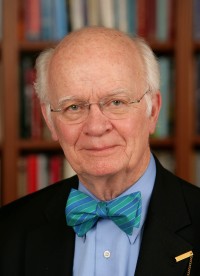Rambo Jesus: Spiritually, Armadeddon is already here
The American nation . . . is engaged at this very hour in an attempt . . . to Christianize every phase of a righteous war waged to save the life of democracy,” Lieutenant George Stewart Jr. and Henry B. Wright, the YMCA’s liaison to the military, wrote in 1917-18, in support of World War I (The Practice of Friendship). Stewart and Wright called Jesus to their side. “For new recruits,” they wrote, “inevitably there comes a day of testing—a day when men’s souls are tried as by fire—the first day of the bayonet drill.”
In this hour when the young recruit is sick at heart and haunted by uncertainty, the YMCA’s religious agent can reassure him by telling him of his vision of Jesus “sighting down a gun barrel and running a bayonet through an enemy’s body. At first I shrank from associating Jesus with the bayonet and essayed to place in his hands the sword the use of which He himself sanctioned. Then it was that I saw Heaven open and beheld One faithful and true. . . . I discerned in His hands a bayonet sword attached to a rifle. . . . He stood in the center of the line and the very front in the thickest of the fight.” In this vision Jesus was disemboweling Hun soldiers in a war about whose meaning and morals we are still stumped.
Now Jesus is again in the line of fire. David D. Kirkpatrick in the New York Times (April 4) bannered “The Return of the Warrior Jesus.” This Jesus is evidently no longer a one-on-one disemboweler. In Tim LaHaye and Jerry B. Jenkins’s Glorious Appearing, the conclusion to the multi-million-dollar Left Behind series, Jesus appears on a white horse, whence he “eviscerates the flesh of millions of unbelievers merely by speaking.” Evidently Jesus has put his sword in its sheath, turning instead to killing with the word. “Men and women soldiers and horses seemed to explode where they stood.” The unbelievers? “Their own flesh dissolved, their eyes melted and their tongues disintegrated.” Serves ’em right.
Kirkpatrick summarizes: “The gentle, pacifist Jesus of the Crucifixion” now shares the spotlight with “a more muscular warrior Jesus of the Second Coming, the Lamb making way for the Lion.” The re-imagers of the One once called the Prince of Peace, the agent of reconciliation, are the kinds of evangelicals—not all, I hasten to add—who need a “warlike image of Jesus” to assure “a godly purpose behind American military actions in Afghanistan and Iraq.”
Stephen Prothero says that “the pendulum is swinging toward a darker, more martial, macho concept of the Messiah.” The often more moderate Ted Haggard of the National Association of Evangelicals welcomes this trend away from “a kind of marshmallowy, Santa Claus Jesus,” typified in Warner Sallman’s famed Head of Christ painting. Kirkpatrick mistakenly assigns Sallmannism to “liberal, mainline Protestant denominations,” who take their knock-of-the-day for identifying Jesus as one who favored peace, not personal disembowelment and mass evisceration.
Some evangelicals work their “sterner, more bellicose image of Jesus,” Kirkpatrick says, into domestic and geopolitics and U.S. military action. Will those evangelicals who don’t agree with this image and use of the warrior Jesus be left behind? These days, because our opponents have an Allah, seen by our Christian militants only as a warrior God who inspires jihad, we evidently need a warrior Jesus. If their vision prevails over almost all of the gospel imagery of Jesus, one might say: spiritually, Armageddon is already here.





